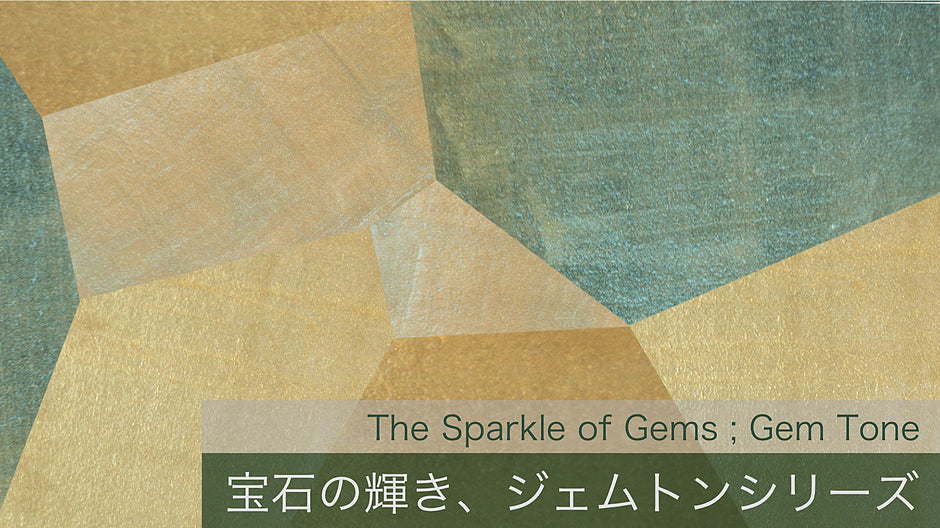In PIGMENT TOKYO, we carry as many as 4,500 colors of pigments.
Among them, mineral pigments are derived from natural ores and bring out a subtle but sparkly appearance unique to nature-based color material.
However, not all natural minerals are ideal for turning them into pigments.
Mineral pigments are, so to speak, sand but in color. The finer the particles, the more light is diffused and reflected, resulting in a change in the intensity and saturation of color.
For example, let's take a look at lapis lazuli, an ultramarine metamorphic rock consisting largely of lazurite.
As you can see, rather than the deep blue that’s famously known from Vermeer's paintings, the color of lapis lazuli actually appears more subtle and washed out.
This is exactly how the pigment is supposed to look like.
It is only through a special process that originated from Cennino Cennini be able to create ultramarine blue as the following picture shows.
This is the reason why natural ultramarine has been so costly since ancient times, it isn’t only because of how precious the lapis lazuli is but also because of the high-valued technique that has been handed down over the centuries.
Theoretically, it is possible to turn the following gemstones like the ones displayed in jewelry stores and museums into ‘pigments’ by simply grinding them.

Top left: Photo by Hiro1960 (photo AC) , Top right: Photo by Hiro1960 (photo AC)
Bottom left: Photo by pebble (photo AC), Bottom right: Photo by Hiro1960 (photo AC)
Ruby, emerald, topaz, and jade are shown accordingly from the top left to the bottom right.
Ruby is also called "Kougyoku" in Japanese. It can be used as the raw material of mineral pigment and you can find it under the name of Natural Kougyokumatsu.
Here it is! As you can see, it turns into a pale and light tone once it’s ground into powder.
Isn’t it strange that even with a fine stone, the pigment does not turn out as beautiful as it used to be?
That’s why, the protagonist of this article, the Gem Tone series was created in the name of these gemstones.
Next, I will show you the colors of ruby, emerald, topaz, and jade from the series.
These are pearlescent pigments consisting of mica coated with titanium dioxide or iron oxide. Some of you may have recalled that I mentioned “mica” in my previous article. It is surprising that mica, which has been around for a long time, has now developed in such many interesting ways.

Natural mica from the article “Glittering Mica - Its History and Usage”
In this article, I painted the mentioned effect pigments on two different backgrounds, one on white and the other on black.
Since the Gem Tone series has fine particles and the pigments do not disperse easily. In this case, I highly recommend adding some dispersant to the pigment powders as it makes the pigments easier to blend with the binder.

【Art Materials Used】
Pigments: Gem Tone Ruby, Gem Tone Emerald, Gem Tone Topaz, Gem Tone Jade
Binder: Acrylic Emulsion
Substrate: Bamboo Washi for Watercolor Art Pad
Let's take a quick look at these samples. For the color ruby, emerald and topaz, there wasn’t any significant change even when the background is black.
This is because these colors have a better hiding power and have the characteristic of being ready to be used immediately after kneading.
However, the black backgrounds create a richer appearance, so if you’re going for a thicker texture with effect pigments, it’s better to have a darker background.
However, if you take a look at the Gem Tone Jade, the color appears very different on the black background.
This pigment has poor hiding power, so in order to get close to the jade color, it is necessary to apply a primer.
For example, when making plastic models, it is said that light colors should be finished with a white background and dark colors with a black one. That is why, when using these special types of pigments, it is always better to test them on remaining scrap pieces beforehand.
If you have a chance to visit us at PIGMENT TOKYO in Tennoz Isle, you can take a close look at these effect pigments.
For someone looking for special kinds or rare pigments that are usually hard to find in general art supplies stores, there might be an encounter in our lab.
Translated by Atsumi Okano and Nelson Hor Ee Herng
PIGMENT TOKYO Art Materials Experts















